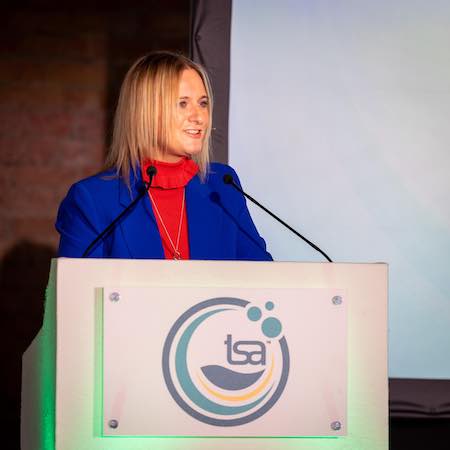At its spring conference, the Textile Services Association (TSA) presented a new standardised test protocol for evaluating the disinfection efficacy of laundry wash processes. This marks the latest stage in the ongoing partnership between the TSA and De Montfort University (DMU), which they believe will help to guarantee the effectiveness of infection controls in healthcare laundry.
The new protocols have been developed following a four-year research project led by Professor Katie Laird at DMU, which was funded and supported by the TSA and other national associations from Europe and America. The research aims to provide accurate information and usable methods of ensuring hygienic cleaning of textiles, particularly in relation to sectors more vulnerable to infection, such as healthcare. Professor Laird and her team have extensive experience in studying healthcare textiles and have previously investigated the survival of microorganisms on textiles and specific wash processes required to decontaminate laundry, among other topics.
TSA Board member Simon Fry, himself an owner of a specialist laundry firm, explains why this work was necessary. "The idea for this project came about when manufacturers began introducing chemicals for cold washing," he says. "While it's a great idea in terms of energy saving, it can introduce risks in terms of less effective disinfection, which is compounded if the traditional tests being used weren't giving accurate results.
"You could almost pick the test to get the results you wanted and I realised that we would need something that accurately showed the kill rates of bacteria, which could be used by all stakeholders to deliver data that allows everyone to work on a level playing field."
The research aimed to create standardised testing protocols that definitively measure how many pathogens are killed by laundry washing processes. In order to achieve this the DMU team needed to study existing infection controls and the current processing methods for healthcare laundry. They also needed to understand the attitudes and knowledge of healthcare staff in terms of infection control policies and how these apply to textiles. Alongside funding the research, the TSA also organised surveys of its members in the UK as well as overseas to help build a clearer understanding of the landscape.
The test developed by Professor Laird and her team accurately demonstrates the disinfection efficacy of laundry during a wash process in a way that can be used throughout the healthcare sector, whether it is in outsourced or on-premise laundries . The test involves placing a sample of inoculated fabric within a membrane, which looks similar to a teabag that allows water and chemicals through but stops bacteria from escaping, meaning that the effectiveness of the decontamination of the laundry process can be properly evaluated. This allows for a like-for-like comparison of different washing methods and equipment types, and how effectively they kill bacteria present on textiles, helping to ensure that infection control standards are maintained.
"Being able to measure disinfection accurately within a working laundry is paramount in managing textiles as a transmission route for infections, particularly in healthcare settings,” Professor Laird explains.
The next phase of this research will see the test methodology incorporated within best practice standards driven by the other national associations, which will include working with the TRSA in America and ETSA in Europe.
Professor Laird's team will continue their research into improving hygiene in laundry, focusing on spores that aren't killed thermally and biofilms that form inside laundry equipment.










